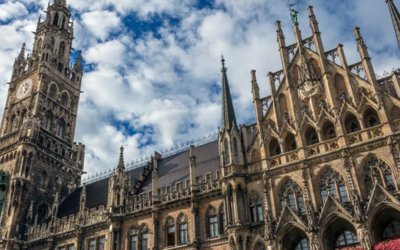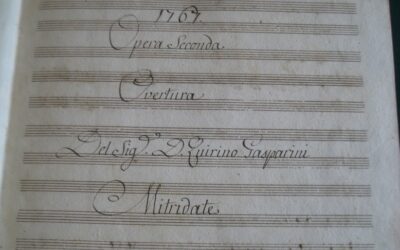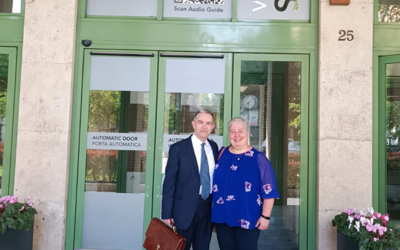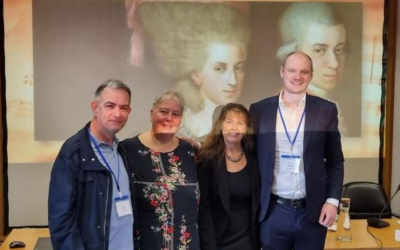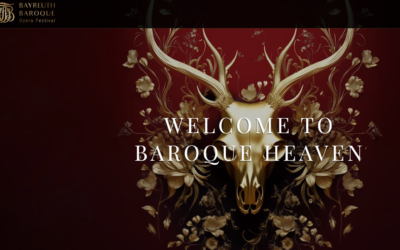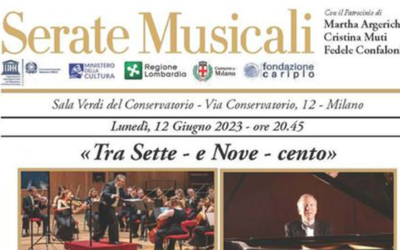An Unfinished Story
The Mysterious Case of Mozart’s Duets
It’s not uncommon for composers of string quartets to leave a legacy of duets as well, as we see in the works of Giovanni Battista Viotti. Yet, when it comes to Mozart, his four duets seem almost accidental—especially the two early works from 1768, composed under the influence of his father, Leopold.
The manuscripts tell a story of corrections, crossed-out notes, and pieces that feel incomplete.
Later, in 1783, Mozart supposedly helped his ailing friend Michael Haydn by writing two duets that were published under Haydn’s name.
This tale, though widely accepted, opens up questions about Mozart’s true role and the curious motivations behind these compositions. Could these duets reflect the struggles and controversies that plagued Mozart’s early years in Vienna?
Mozart: The Fall of the Gods
This book compiles the results of our studies on 18th-century music and Mozart, who has been revered for over two centuries as a deity. We dismantle the baseless cult of Mozart and strip away the clichés that falsely present him as a natural genius, revealing the contradictions in conventional biographies. In this work, divided into two parts, we identify and critically analyze several contradictory points in the vast Mozart bibliography. Each of the nearly 2,000 citations is meticulously sourced, allowing readers to verify the findings. This critical biography of Mozart emerges from these premises, addressing the numerous doubts raised by researchers.
"The truth, much like the duets themselves, remains unfinished."
Mozart: The Fall of the Gods
The Unfinished Legacy of Mozart’s Duets
Many celebrated composers of string quartets, such as Giovanni Battista Viotti, left behind a respectable number of string duets. Viotti’s six concertante duets for two violins, published in 1789, are particularly remarkable—just listen to the C minor duet Op.29 No.3 for two violins. In stark contrast, Mozart only composed four duets. These early duets, specifically K.46d and K.46e, stem from the collaboration between Leopold and Wolfgang in Vienna in 1768. Scored for violin and bass, they curiously lack figured bass markings, a sign that these works were not fully polished.
The Father’s Hand in Mozart’s Early Duets
A closer look at the manuscript of these duets reveals the heavy hand of Leopold Mozart. Not only did he add melodies to empty staves, but he also corrected many of Wolfgang’s notes, despite the pieces being relatively simple. Consisting of a brief Allegro followed by two Minuets, these duets are far from complex. Yet, Leopold’s numerous corrections raise questions about the quality of the compositions and the extent of his influence over his son’s work at this time.
These are not piano sonatas, even though Deutsche Grammophon included them in their complete edition of Mozart’s sonatas, nor should they be classified as violin sonatas, as many mistakenly do. To include these pieces in the 15th box set of the Philips Complete Mozart Edition under the guise of violin and piano sonatas is far from a philological move. As experts have pointed out, “the style and texture of the lower part” confirm these are “simple duets,” lacking in particular musical charm. They seem “awkward” and unfinished, as if abandoned after a commission fell through.
1768: A Year of Accusations and Fraud
The year 1768 was a challenging one for the Mozart family, who were caught up in accusations of fraud related to the opera La finta semplice. In September, Leopold was forced to compile a list of Wolfgang’s compositions to present as proof of his son’s authorship. These early duets, with their unfinished quality, seem to reflect the professional doubts of the time, reinforcing the suspicions of Viennese musicians and impresarios.
A Return to Duets, but Not Alone
It would take fifteen years before Wolfgang revisited the idea of string duets. In Salzburg in 1783, he composed the G major K.423 and B flat major K.424 duets. This time, however, Mozart’s work was heavily inspired by Michael Haydn, and again, Leopold’s presence loomed large. Despite the impressive nature of these later works, the collaboration between Wolfgang and his father is evident, and questions of authorship and influence continue to linger.
The Curious Case of Michael Haydn and the Anonymous Duets
A well-known story, often used to embellish the “Mozart legend,” involves the creation of these 1783 duets. It is said that Michael Haydn, gravely ill and on the verge of death, was unable to fulfil a commission from Archbishop Colloredo for violin and viola duets. Colloredo, unmoved by Haydn’s condition, demanded the work regardless. Seeing his friend in distress, Mozart supposedly stepped in, composing the duets in a matter of days. These works were then published under Haydn’s name as an act of charity.
This story has persisted for centuries, despite its embellishments. In fact, some later biographies claimed that Mozart wrote all six duets, not just the two present in his manuscript. The anecdote, first recorded shortly after Haydn’s death in 1806, gained momentum throughout the 19th century. Nissen, one of Mozart’s biographers, added that “after several years, these duets were recognised as Mozart’s works,” and claimed that the composer never intended to publish them under his own name. This narrative was further exaggerated by musicologists like Jahn and Abert, who suggested that Mozart’s anonymous compositions were a way of mocking his old adversary, Archbishop Colloredo.
An Unfinished Story
Whether these duets reflect genuine collaboration, Mozart’s unfinished thoughts, or an act of kindness, the truth behind them remains unclear. What is evident is that these works offer a glimpse into the complicated relationships and struggles that shaped Mozart’s early career. Ultimately, they are not just simple duets—they are fragments of a much larger and unfinished story.
“The truth, much like the duets themselves, remains unfinished.”
You May Also Like
The Return of Gatti’s Aria
In the magnificent Max Joseph Hall of the Residenz München, tenor Daniel Behle performed the aria “Puoi vantar le tue ritorte” by Luigi Gatti, taken from his opera Nitteti. This concertante piece, for which we composed the cadenzas, was brought to life by the Salzburger Hofmusik orchestra under the direction of Wolfgang Brunner.
Quirino Gasparini’s Music Performed for the First Time
For the first time in modern history, Quirino Gasparini’s music has been performed. This concert, featuring arias from Mitridate and Beethoven’s Seventh Symphony, was conducted by Maestro Leonardo Muzii, with soprano Anastasiia Petrova.
Teaching Mozart at Bocconi University
We delivered a four-hour lecture on Mozart at Bocconi University, showcasing unpublished music by Gasparini, Gatti, and Tozzi while comparing textual and musical treatment with Mozart’s works. Unseen variants from Le Nozze di Figaro were also revealed.
New Revelations About Mozart at the Évora Forensic Conference
At the Évora Forensic Conference, new research confirmed that both Mozart’s personal catalogue and the signatures on his violin concertos are forgeries, challenging long-held beliefs.
Modern Premieres at Bayreuth
The modern premieres of Antonio Tozzi, Luigi Gatti, and Tommaso Traetta’s works at Bayreuth brought long-overlooked Italian composers back into the spotlight. These performances, transcribed and revised by Luca Bianchini and Anna Trombetta, have restored the place of these remarkable composers in music history.
Luchesi’s Concerto Revived at Milan’s Sala Verdi
A standing ovation followed the performance of our revised edition of Luchesi’s Concerto in F for piano and strings at the Sala Verdi in Milan, conducted by Maestro Giorgio Rodolfo Marini and performed by the Insubria Chamber Orchestra.


